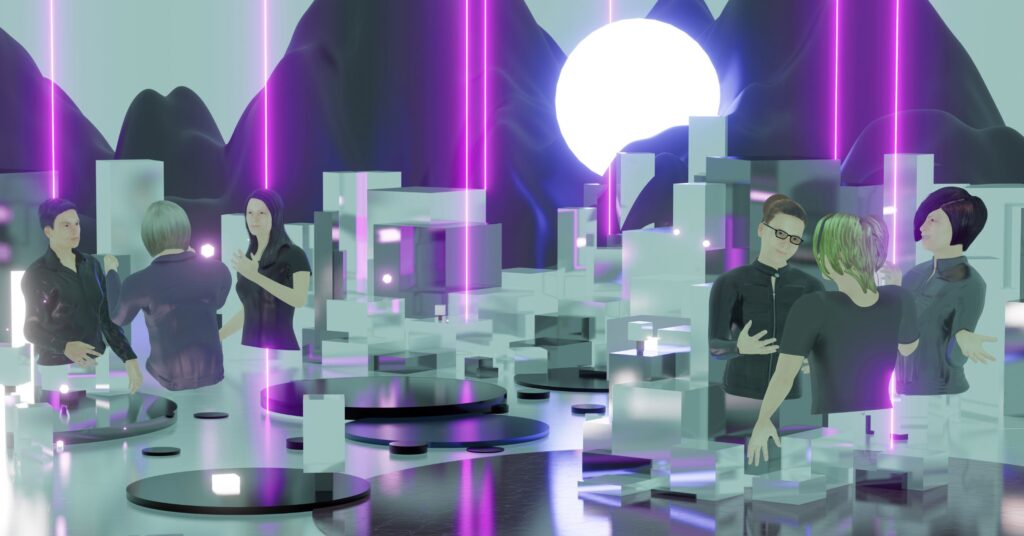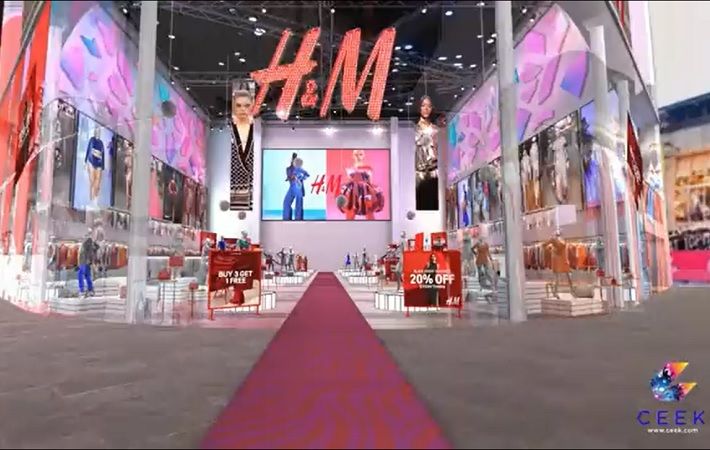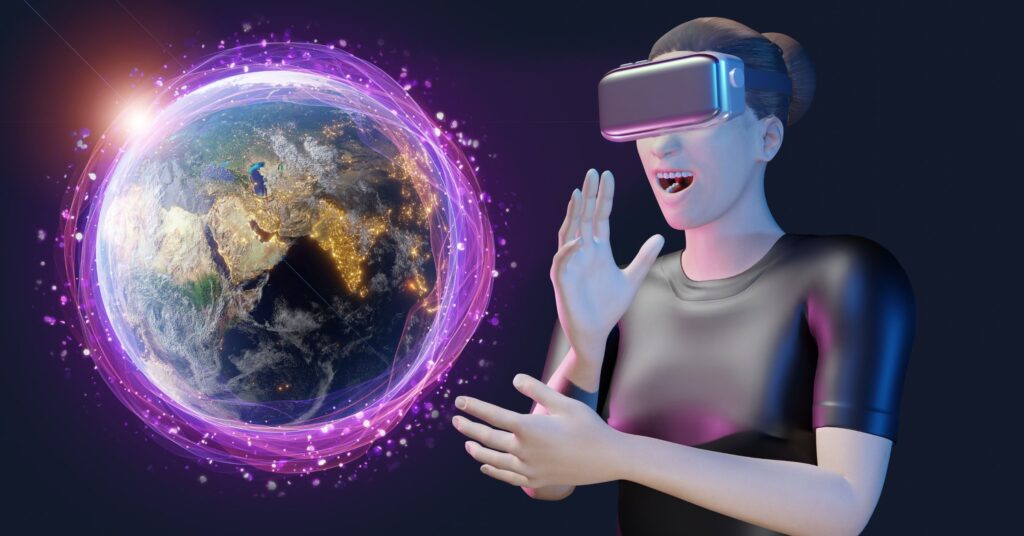Table of Contents
Metaverse and Web 3.0
The metaverse is stepping into the spotlight as an entirely fresh chapter in the tale of the internet, buoyed by the arrival of Web 3.0. This new web era is the backbone of the metaverse, providing the necessary technologies to create a fully immersive, decentralized virtual world.
What’s the difference between Web 1.0, 2.0, and now 3.0? Let’s break it down:
- Web 1.0: Think of this as the “read-only” phase. It was the early stage of the internet where users could view content but not interact with it.
- Web 2.0: This is the “read-write” phase. We could not only consume content, but also create it. Social media, blogging, and video streaming are all products of Web 2.0.
- Web 3.0: Welcome to the “read-write-execute” phase. This is where blockchain technology, decentralized models, and virtual reality come into play. Web 3.0 is a user-friendly internet where everyone can participate in and gain from the digital world.
Web 3.0 and blockchain are important for the metaverse. They offer a safe, clear system for dealing with things in the virtual world. This system lets us have digital items, make special avatars, and even purchase virtual land.
And let’s not forget about virtual and augmented reality. They’re your ticket to experiencing this digital universe: from virtual concerts to augmented reality shopping experiences.
In a nutshell, the metaverse leverages Web 3.0 technologies to create a whole new world of experiences. It’s an opportunity that brands simply cannot afford to miss.

What is the metaverse?
If you’ve ever watched ‘Ready Player One’ or ‘The Matrix’ and imagined a digital universe where anything is possible, you’re already halfway to understanding the metaverse. It’s a term that’s been around in the tech world and beyond lately.
First, allow us to pull back the curtains on the mystery that is the metaverse. It’s important to set the stage before exploring the complex mechanics and potential in marketing.
What happens in the metaverse?
The metaverse – a fever dream of virtuality, a center of actions, encounters, and sensations where the distinction between the physical and the digitized universe becomes blurred. It’s a parallel virtual world where people can do just about anything they can do in real life, and then some! Think of it as a massive, interconnected universe of online game universes.
The metaverse offers many opportunities for activities such as shopping, trading, travel, and socializing. Here’s what you can do:
- Shop: You can browse through virtual stores, try on clothes, shoes, or accessories on your digital avatar, and purchase them for use either in the metaverse or in real life.
- Trade: The metaverse economy proliferates with digital goods, currencies, and assets. NFTs (Non-Fungible Tokens) are a prime example of things you can trade.
- Travel: Teleport to any destination within the metaverse, explore new environments or attend events without leaving your home.
- Socialize: The scope of social interaction in the metaverse is boundless. Users can meet, chat, play games, attend concerts, or even go on virtual dates.
- Interact: Users can interact with both the digital environment and other users. This interaction can include gestures, actions, and full-blown conversations.
A few popular online game universes that serve as examples of the metaverse concept are Fortnite, Roblox, Animal Crossing, and Minecraft. These platforms provide myriad ways for players to engage, socialize, and immerse themselves in a virtual community.

Meta Horizon Worlds
This immersive and seamless digital environment is the brainchild of Meta Platforms Inc., formerly known as Facebook Inc. The Meta Horizon Worlds is available to users aged 18 and above in the United States and Canada, with plans for further global expansion in the future. It’s quite the busy universe too, with an estimated several thousand users hopping in daily, and that number is predicted to rise exponentially as the metaverse concept gains traction.
- Ownership: As previously mentioned, Meta Horizon Worlds is owned and operated by Meta Platforms Inc.
- Equipment Needed: To access this virtual universe, users would need a VR headset, specifically the Quest 2 from Facebook.
But what can you do in these Meta Horizon Worlds? Well, a whole lot, actually! It’s not just a game; it’s a lifestyle.
You can design your avatar, build your dream home, explore exotic places, and even throw a virtual party. The gaming opportunities are vast, with a plethora of games to choose from, like puzzles, adventure games, or sports games.
But it’s not all games. The most exciting feature in Meta Horizon Worlds are social interactions. You can meet new people, hang out with friends, attend concerts, or learn a new skill in a group class.
The metaverse is coming. It will be a new frontier that redefines how we interact with each other and how we do business. Brands that don’t start thinking about it now will be left behind.
– Mark Zuckerberg
Internet of Things
The Internet of Things (IoT) connects our real world to the metaverse. It’s not just about smart devices anymore; the IoT has become the gateway for metaverse access.
How does this work? Think of the IoT as a data collection and integration engine. It collects data from different sources such as sensors, user actions, etc. This data is then funneled into the metaverse, sculpting a more immersive experience for users.
- Real-world data: By using IoT, the metaverse can incorporate elements of the physical world, such as weather conditions, traffic patterns, and even user biometrics.
- Realistic experience: With IoT data, the metaverse can adapt to changes in the physical world in real-time. Imagine, for instance, attending a virtual concert that aligns with your local weather conditions, or a retail store that adapts its virtual layout based on real-world shopper behavior.

But the synergy doesn’t stop at IoT. There’s an ongoing collaboration with AI that’s fine-tuning the metaverse experience. When combined, AI and IoT can develop real-time simulations and adapt to user behavior in the metaverse, creating a personalized digital universe.
Cryptocurrency and NFTs
In the metaverse, cryptocurrencies and NFTs (Non-Fungible Tokens) play pivotal roles in shaping user interactions and transactions. These digital currencies and assets are the load-bearing pillars of the Metaverse, enabling digital payment processes and the assertion of ownership over virtual products.
The metaverse attracts users with its digital economy, a mix of entertainment, social interaction, and commerce, primarily based on blockchain technology.
Decentraland and similar companies have developed their own cryptocurrencies using blockchain technology. Users can buy, sell, and trade virtual assets securely, thanks to the nature of blockchain technology. Decentraland’s in-house currency, MANA, is an example of a metaverse cryptocurrency. Users can purchase virtual land, participate in the economy, and even vote on policy decisions in the Decentraland community with MANA.
The crypto-based metaverse also has its issues. Users’ concerns at the moment are:
- The authenticity of digital currencies and assets,
- The safety of digital payments, and
- The volatility of cryptocurrency markets which could potentially impact the value of their owned assets.
On the marketing front, brands are increasingly using cryptocurrencies as metaverse rewards, creating loyal communities and incentivizing user engagement. These rewards not only promote brand interaction but also give users a sense of ownership and stake in the brand’s metaverse presence.
Is the Metaverse a Worthy Investment?
When the concept of the metaverse first hit the horizon, it seemed like something straight out of a sci-fi novel. But here we are, witnessing the dawn of a new era where virtual worlds and augmented realities seem to become the next frontier for businesses. As a brand, should you consider jumping on this train?
Over 70% of Gen Z and Millennials show interest in VR and AR experiences.
Virtual Events
Events in the metaverse don’t necessitate booking a venue or even leaving your house. A conference, art show, or meetup could happen anywhere, at any time, and you could be there in an instant.
Platforms like Horizon Worlds and Decentraland have revolutionized the idea of event planning and participation. These virtual worlds offer many opportunities for brands to host a variety of events.
But why take your event to the metaverse? Well, the benefits are as diverse as they are enticing:
- Rake in crypto revenue: With the metaverse’s economy, you can earn and trade in cryptocurrency.
- Boost brand awareness: In the metaverse, a well-hosted event can make your brand stand out.
- Networking opportunities: Virtual events allow you to connect with a global audience, breaking down geographical barriers.
So, whether you’re hosting or attending, virtual events in the metaverse are an opportunity you don’t want to miss. It’s the next big thing in brand promotion and a leap forward in how we interact.
Customized Spaces, Interactive Games, Unique Avatars, and Niche Stores
The concept of owning branded locations, games, avatar fashion, and even shops in the Metaverse is quickly gaining traction, and it’s something you cannot afford to ignore. Brands with a solid budget can buy and brand their own digital real estate in metaverses like Decentraland, Meta Horizon Worlds, and The Sandbox.
Next, let’s talk about the direct-to-avatar (D2A) economy and the retail virtual goods market for avatars. In simple terms, it’s the practice of selling virtual goods directly to avatars, the digital representation of users in the Metaverse.
- Branded Locations: Your company can have its own digital presence in the Metaverse, just like a physical store or office.
- Games: Brands can create unique gaming experiences with their products or services integrated.
- Avatar Fashion: Just like in the real world, avatars need to dress up too. Brands can create digital clothing or accessories for avatars to wear.
- Shops: Physical stores can be replicated in the metaverse, providing a new, immersive shopping experience for customers.
Take Balenciaga’s partnership with Fortnite for example. They created a digital collection of clothes that players could purchase and use in the game. Similarly, Gucci has also ventured into the Metaverse, selling digital products on Roblox. These are not just fashion statements, but strategic marketing moves that capitalize on the Metaverse economy.
Your Virtual Products in Metaverse
Imagine a world where your brand’s products can (and should) exist in the digital universe as well. Yes, we’re talking about selling digital products for metaverse avatars. This concept offers a great opportunity for brands to make a whole new revenue stream by creating customizable avatar products.
In the metaverse, partner marketing exists as well as in the real world. By joining forces with influential avatars in the metaverse, brands can design and promote unique digital products to a massive, engaged audience.
Several big-name brands have already tapped into the metaverse’s potential:
- Nike: Nike has dived headfirst into the metaverse, selling virtual sneakers for avatars. They’ve even patented their own brand of virtual footwear, the “CryptoKicks”.
- Gucci: Gucci has also made waves in the metaverse, launching a virtual version of its iconic Dionysus bag that sold out instantly.
So, don’t just sit on the sidelines. Jump in, sell digital products, and create new possibilities for your brand in the metaverse.
Replicate Real-Life Marketing in Metaverse
The key to success? Adaptation and immersion. Adapting your marketing strategy to fit the metaverse is more than just copy and paste. It’s about understanding the metaverse environment and leveraging the tech you already have to create a unique brand experience.
- Understand the Metaverse: The metaverse merges the physical and the digital. It’s a place where your brand can not only advertise, but also interact in real-time with your audience. Your metaverse marketing strategy should reflect accordingly.
- Integrate Your Tech Stack: Don’t start from scratch. Your existing tech stack – from AI to AR – can be integrated into the metaverse. Use the tech you know to explore what you don’t.
- Replicate Real-Life Traditional Marketing: In the metaverse, your brand can create digital storefronts, host events, or conduct product demos. Mirror your real-world marketing strategies, but also tailor them to the unique features of the metaverse.

But what about the elephant in the room – cybersecurity concerns in the metaverse? While the metaverse offers infinite possibilities, it’s not without risks. Cybersecurity should be an integral part of your metaverse marketing plan.
Conclusion
For marketers, the metaverse offers a rich canvas teeming with opportunities. The main factor of growth is the development and acceptance of VR and AR technologies.
The metaverse is a new frontier for brands to explore. It’s a place where they can connect with consumers in new and exciting ways.
– Gary Vaynerchuk
These technologies have metamorphosed our interaction with digital interfaces. Mixed reality, VR, and AR in the metaverse improve user experiences, leading to advanced digital interaction.
- Virtual Reality: Transports users into entirely digital realms, creating immersive experiences.
- Augmented Reality: Superimposes digital assets into our physical reality, enhancing our interactions with the world.
- Mixed Reality: Merges VR and AR for a seamless blend of real and digital worlds.

Brands are not sleeping on this development. Big names such as Nike, H&M, Gucci, Disney, and Facebook are at the forefront of developing virtual elements like communities, content, assets, experiences, fashion, and art. They are actively exploring the metaverse for brand development, setting the pace for others to follow.
It’s estimated that the metaverse market could hit $1 trillion by 2030.
So, as with all emerging markets, don’t skip this opportunity.




